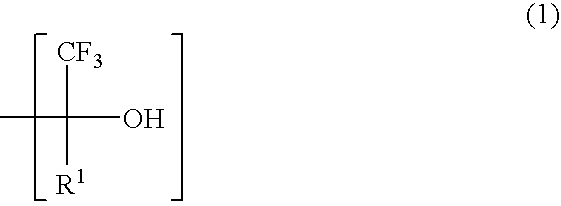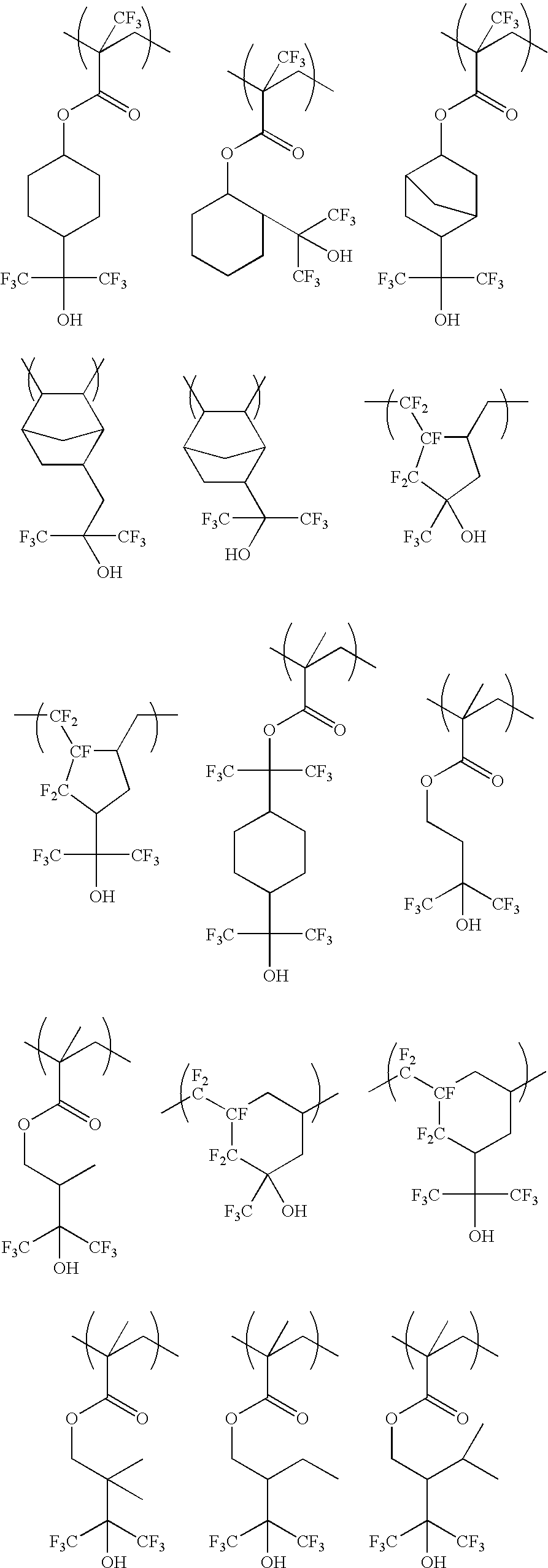Resist protective coating material and patterning process
a technology of resist and protective coating, applied in the direction of photosensitive materials, photomechanical equipment, instruments, etc., can solve the problems of low resist etch resistance, high cost of scanners, and increased cost of scanning machines
- Summary
- Abstract
- Description
- Claims
- Application Information
AI Technical Summary
Benefits of technology
Problems solved by technology
Method used
Image
Examples
example
[0057] Examples of the invention are given below by way of illustration and not by way of limitation. All parts are by weight. The weight average molecular weight (Mw) and number average molecular weight (Mn) are determined by gel permeation chromatography (GPC) versus polystyrene standards, and the molecular weight dispersity (Mw / Mn) is computed therefrom. Examples 1-23 and Comparative Examples 1-7
[0058] Resist protective coating polymers, designated PCP 1 to 12, were prepared by radical polymerization. The structure of these polymers is shown below together with Mw and Mw / Mn.
[0059] Resist protective coating solutions were prepared by combining 3.5 parts of protective coating polymers PCP1 to 12 with 100 parts of a solvent according to the formulation shown in Table 1, and filtering through a high-density polyethylene (HDPE) filter having a pore size of 0.1 micron.
[0060] A resist solution was prepared by dissolving 100 parts of a resist polymer, designated RP1 to 4 and shown be...
PUM
| Property | Measurement | Unit |
|---|---|---|
| wavelength | aaaaa | aaaaa |
| wavelength | aaaaa | aaaaa |
| size | aaaaa | aaaaa |
Abstract
Description
Claims
Application Information
 Login to View More
Login to View More - R&D
- Intellectual Property
- Life Sciences
- Materials
- Tech Scout
- Unparalleled Data Quality
- Higher Quality Content
- 60% Fewer Hallucinations
Browse by: Latest US Patents, China's latest patents, Technical Efficacy Thesaurus, Application Domain, Technology Topic, Popular Technical Reports.
© 2025 PatSnap. All rights reserved.Legal|Privacy policy|Modern Slavery Act Transparency Statement|Sitemap|About US| Contact US: help@patsnap.com



